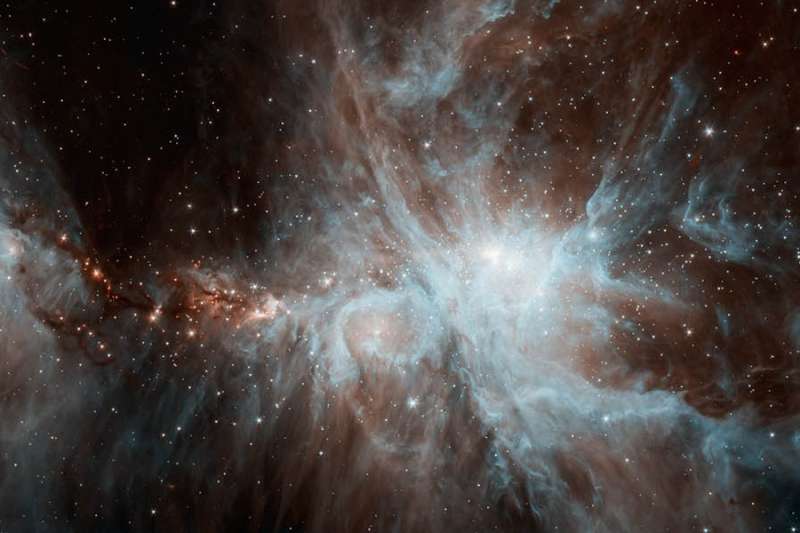
|
Credit & Copyright: NASA,
JPL-Caltech
Explanation:
Few cosmic vistas excite the imagination like
the Orion Nebula,
an immense stellar nursery some 1,500 light-years away.
Spanning about 40 light-years across the region,
this infrared image
from the Spitzer Space Telescope was constructed from data intended to
monitor
the brightness of the nebula's young stars, many still surrounded
by dusty, planet-forming disks.
Orion's young stars are only about 1 million years old,
compared to the Sun's age of 4.6 billion years.
The region's hottest stars are found in the
Trapezium Cluster, the brightest cluster
near picture center.
Launched into orbit around the Sun
on August 25, 2003 Spitzer's liquid helium
coolant ran out in May 2009.
The infrared space telescope continues to operate though, its mission
scheduled to end on January 30, 2020.
Recorded in 2010, this false color view is from two
channels that still remain sensitive to
infrared light
at Spitzer's warmer operating temperatures.
|
January February March April May June July August September October November December |
| ||||||||||||||||||||||||||||||||||||||||||||||||
NASA Web Site Statements, Warnings, and Disclaimers
NASA Official: Jay Norris. Specific rights apply.
A service of: LHEA at NASA / GSFC
& Michigan Tech. U.
Based on Astronomy Picture
Of the Day
Publications with keywords: infrared - Orion Nebula - Spitzer space telescope
Publications with words: infrared - Orion Nebula - Spitzer space telescope
See also:
- Orion and the Running Man
- APOD: 2025 August 13 Á Trapezium: In the Heart of Orion
- APOD: 2025 April 20 Á The Orion Nebula in Visible and Infrared
- APOD: 2025 February 23 Á Saturn in Infrared from Cassini
- APOD: 2024 November 4 Á M42: The Great Nebula in Orion
- APOD: 2024 September 10 Á Horsehead and Orion Nebulas
- Trapezium: At the Heart of Orion
